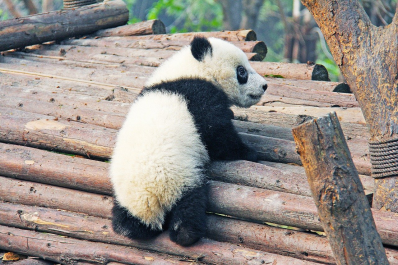Possessive Apostrophes: panda
The Grammar Bit!
Read the three scintillating sentences opposite. Notice how the words in bold feature apostrophes. They are showing that something belongs to someone or something. For example, the silhouette belongs to the panda – “The panda’s silhouette,” and the bodies belonged to the panda cubs – “The panda cubs’ bodies…”
With a talk partner, discuss the position of the apostrophe. Does it always remain the same? What differences are there? Does it change the meaning?
Rule
- For a singular noun, add‘s.
- For a plural noun ending in -s, just add an apostrophe.
(Exceptions to this include pluralised nouns that don’t end in -s. e.g. men’s, children’s and women’s.)
Scintillating Sentences
1)The black and white of its fur breaks up the panda’s silhouette.
2) The forest’s snowy floor doesn’t stop the giant panda from finding its dinner.
3) The panda cubs’ bodies were pink and furless.
4) In the wild, the twins’ chances of survival were slim.

Did you know?
In the wild, half of all pandas give birth to twins; however, it is very rare for both cubs to survive as panda mothers are only able to raise one at a time and often abandon the second twin.

